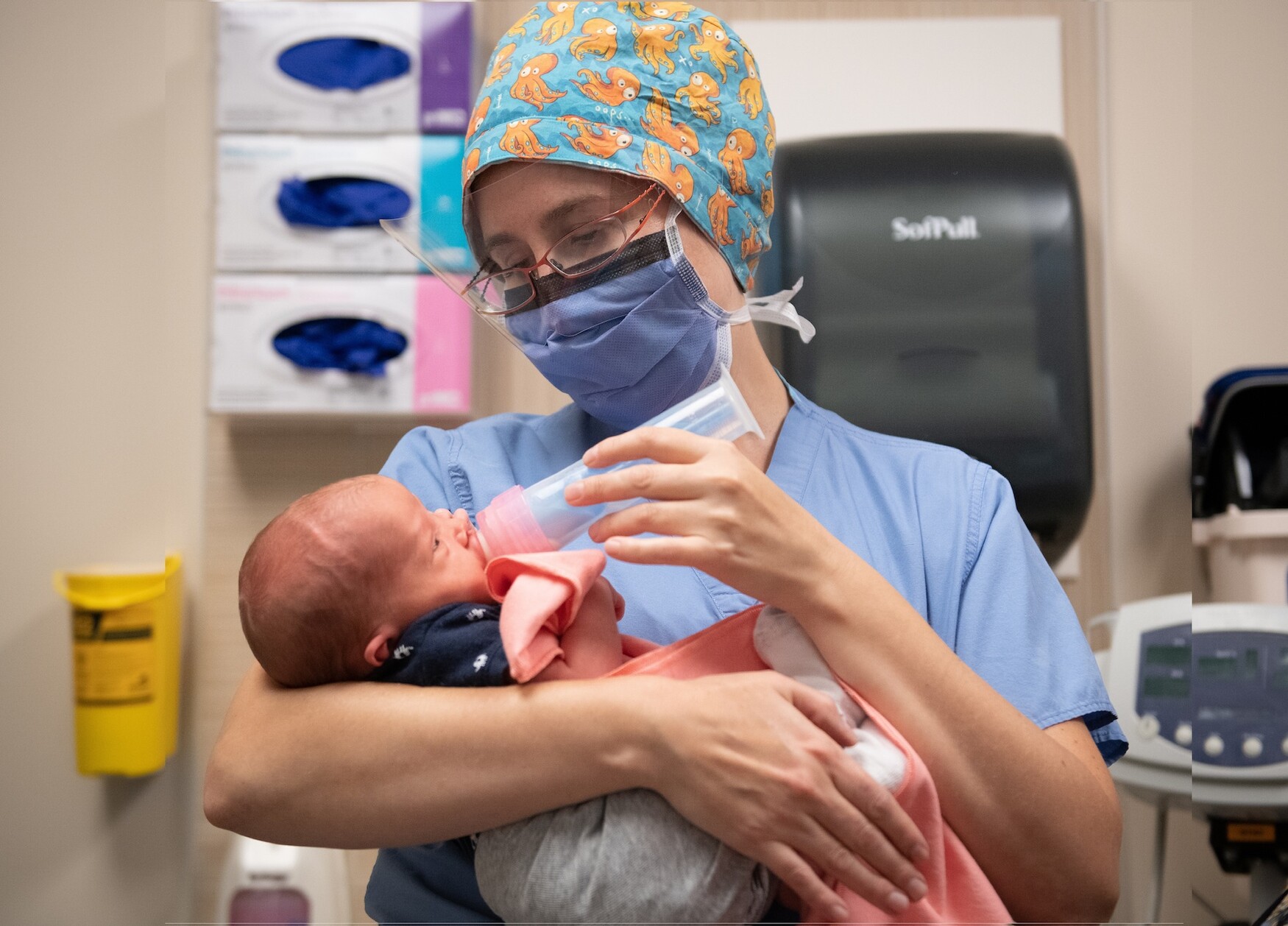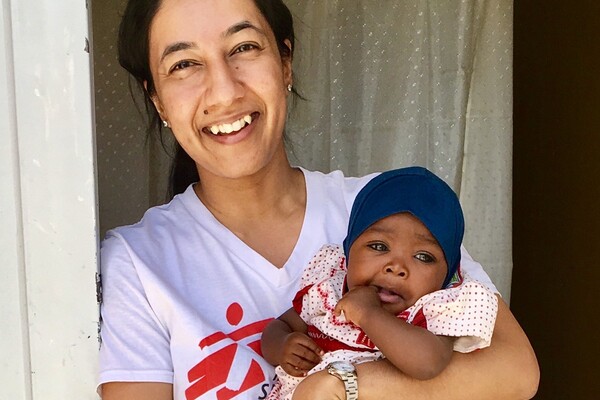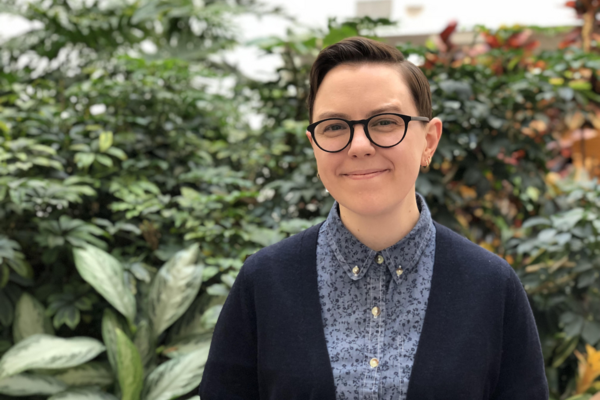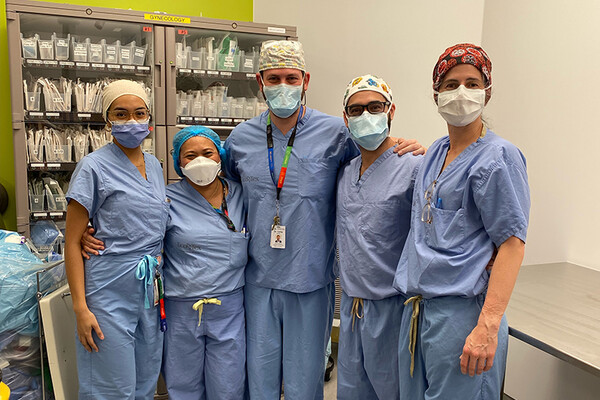Dr. Anne Berndl: Supporting healthy pregnancies for people with physical disabilities
People of Obgyn

Before Dr. Anne Berndl attended medical school — and long before she would become the director of the Accessible Care Pregnancy Clinic, the first clinic of its kind in North America providing pregnancy and birth care to people with physical disabilities — she worked in a foster home for kids with physical disabilities.
It was then that Berndl first began to form an understanding of the challenges faced by people with disabilities in the healthcare system, the crucial importance of accessibility, and how different environments can either amplify or alleviate those challenges in a profound way.
She didn’t know it then, but that experience would help to set a course for her career in medicine.
“That was an initial contact point where I became more sensitized to some of the concerns that people with disabilities have on a day-to-day basis, as well as how much the environment that the person with a disability is in impacts the way they experience disability,” says Berndl, an associate professor in our Department.
“This interplay and environment and disability was made really relevant to me at that time.”
In residency years later, Berndl found herself again considering the concerns of the population, as she began to learn more about the variety of challenges faced by pregnant people with disabilities who want to access gynaecologic care.
“There was a lot of concern around those people not being properly accommodated in a clinic, or even having to face certain prejudices around why this person might be sexually active or might be pregnant. At the same time, there wasn’t really a standard for how to care for people with disabilities in pregnancy,” Berndl says.
“All of those pieces together made me want to work toward improving care for this population. There are a lot of high-risk concerns for a pregnant person with a disability that we need to think about from a maternal-fetal medicine perspective, but also a lot of access concerns and psychosocial concerns, in terms of making sure they receive care in a compassionate and dignified manner.
“Those are some of the factors that made me want to establish this clinic and do it in an evidence-based, person-centred manner.”
Before launching the Accessible Care Pregnancy Clinic at Sunnybrook Health Sciences Centre in 2017 — the first clinic in North America to provide pregnancy care specifically for people with physical disabilities — Berndl spent three years in consultation with the community about virtually every aspect of how the clinic would look, function, and serve its patients.
She consulted at length with the Centre for Independent Living in Toronto (CILT) and the DisAbled Women’s Network Canada (DAWN). She also conducted interviews with people with disabilities who had recently had children to learn more about their experiences.
“There’s a saying in the disability community: ‘Nothing about us without us.’ That’s important because there’s a long history of medical care being applied in an inappropriate manner for people with disabilities,” Berndl explains.
“One big message that we got from all of this consultation is that every person is an individual. Although there may be some common needs and factors in terms of health care, you can’t group people with disabilities together. You must take care to treat each person as an individual.”
That research was instructive for Berndl and her team. For instance, one issue that emerged in interviews was that having a multi-disciplinary team of care providers sometimes left patients dealing with a lack of communication, a sense of disjointedness in their overall care plan, and a burdensome number of appointments at different sites.
In part because of that kind of feedback, Berndl’s clinic made excellence in communication a pillar of its approach, while also endeavouring to decrease the transportation burden for patients by consolidating their appointments and making use of virtual care platforms when possible. Further, attendants and support persons are encouraged and welcome to attend appointments.
During those three years of preparation, Berndl’s team also worked diligently to ensure the clinic would be as physically accessible as possible. Berndl wrote letters to advocate for alterations to building codes so changes could be made to the clinic’s structure. An occupational therapist was brought on to consult on further accessibility measures.
Now, the clinic features an accessible birthing suite to accommodate multiple mobility aid devices, while the extensive mobility aid equipment on hand includes a Hoyer lift, wheelchair-accessible scale, and height-adjustable stretchers.
In addition, almost everyone working in the clinic who might have contact with patients — including administrative assistants, nurses, stenographers, and medical students — attended workshops and presentations by DAWN exploring disability in pregnancy.
“This is an attempt to try to work against the bias we know is prevalent when it comes to this population,” Berndl explains. “We took those steps to ensure the clinic would be a positive, non-biased environment where we provide high-quality, evidence-based antenatal care for people with disabilities.”
Among her patients, Berndl sees an especially wide variety of cases, including spinal cord injury, spina bifida, cerebral palsy, myasthenia gravis, skeletal dysplasia, and multiple sclerosis. Many other patients have suffered physical trauma from falls, car accidents, or other incidents. Others might have a disability stemming from a metabolic issue or genetic concern.
“I do see a huge variety of cases, and that’s one of the challenges, but also the exciting part about what we do at the Accessible Care Pregnancy Clinic,” Berndl says. “Each person has their own story in terms of how their disability could interact with their pregnancy or impact their life or wellbeing.”
To properly care for such a diverse group of patients, Berndl’s team works hard to anticipate patient needs before they enter the clinic.
“There’s a lot of communication that Dr. Berndl initiates to the rest of the team before we even meet patients for their initial assessment, to make sure that the appointment goes smoothly,” says Elizabeth Jung, an advanced practice nurse at the clinic.
“I’m always amazed at how thorough Dr. Berndl is. There’s always a communication piece that stands out with her. She thinks ahead to call these specialty services and bring people from different disciplines into a person’s care in a timely manner, all so that at the end of it all, this patient can have a safe pregnancy and a safe delivery.
“She’s so caring,” Jung added. “One of the things that surprised me as this clinic got up and running is that she’s really an advocate for this population. I see her as this caring and competent doctor, but outside of that patient-focused role, she really does advocate for the community. She challenges these ideas about disability in pregnancy and backs it up with her own research and experience. She really strives to change our concept of what disability and parenting really looks like.”
Indeed, Berndl was the lead author on the SOGC’s first national guideline on labour, delivery, and postpartum care for people with physical disabilities. She’s also chair of the women’s health guideline for the U.S.-based Spina Bifida Association. And Berndl is an in-demand public speaker whose work sometimes receives high-profile media attention, as in the case of her patient Danielle Kane, a victim of the 2018 Danforth mass shooting who gave birth to her first child earlier this year.
Berndl hopes that when positive stories like that attract widespread attention, it helps to reduce an overall bias that actually counts as one of the more significant barriers to healthcare for people with disabilities.
“There’s so much data and so much very real concern that people with disabilities do not get the same access to healthcare as people who don’t have disabilities. And while there are a lot of physical and time components to accessibility, one of the biggest barriers to care is concern from someone with a disability that they will encounter bias when they go to receive healthcare. That’s a real gap that needs to be bridged,” Berndl explains.
“So from an advocacy point of view, I’m hoping that sharing research and positive stories about this population can do two things. First, I hope that it can help change attitudes and diminish bias among people who don’t have a physical disability. And I also hope it might make someone who does have a physical disability who is considering pregnancy say: ‘Yes, this is something that I can do and there’s a place where I can get good, respectful care.’
“I’m hoping that by sharing all these positive messages about people with physical disabilities becoming parents — having safe and successful pregnancies, having healthcare providers who feel comfortable and positive about providing that care —we can shift the attitudes about people with disabilities and especially people with disabilities who want to become parents. That’s my hope.”
Berndl is optimistic that things are moving in the right direction. For one thing, she is encouraged by the enthusiasm she sees from our trainees to learn more about providing care for this population. “One thing I really enjoy is that the residents and medical students and fellows who are now in training are so keen to be able to provide this care, to learn more about it, and to participate in research.”
That is one of many reasons Berndl feels positively that more clinics like hers will begin to emerge in the near future.
“I’m really happy to provide care for this population. It’s a joyous thing to be able to help people have healthy families, and I think that everyone who wants to build a family deserves the chance to do that in a safe and positive way. It gives me a lot of joy to help people do that,” said Berndl, an outdoorsy mother of three whose husband, coincidentally, happened to be part of the aforementioned foster family that initially kindled her interest in this kind of work.
“Really, we are just at the beginning of what we can learn to provide really good care for this population. To see that our learners are so enthusiastic about this, I know in that the future that ours will not be the only clinic providing this type of care. When that happens, we will only improve accessibility for all people.”



